
views
Using Markers
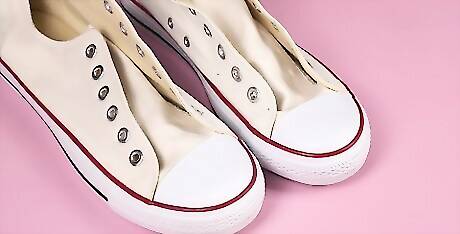
Start with a clean shoe. The best Converse to work on are brand new. If you can't get new ones, you will need to clean the ones you already own. This will help the ink stick and show up better. Wipe down the rubber parts with a cotton ball soaked in rubbing alcohol. Wipe down the fabric parts with a damp towel. Let the shoe dry before moving on. Most markers are translucent, and will show up best against a white shoe. If you are going to buy a new pair of Converse, try to get white ones. If you are going to color the entire shoe, remove the shoe laces. You can even color those ones as well.
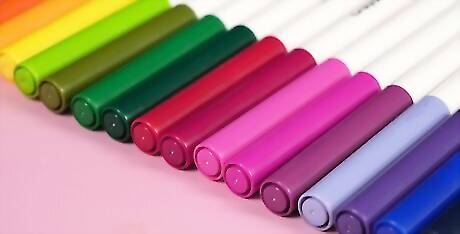
Get some permanent markers or fabric markers. Permanent markers will work on all parts of the shoe. Because they are translucent, they will show up best against white Converse. Fabric markers will only work on the fabric part of the shoe. They may smear if you use them on the rubber part. Make sure you get the right type of fabric marker. If your shoe is colored, get a fabric marker intended for dark or colored fabric. If your shoe is white, you can use any type of fabric marker.

Come up with a design, and practice it on a sheet of paper or scrap of fabric. Once you start coloring your shoe, it will be difficult to erase any mistakes. Sketch out your design on a sheet of paper or scrap of fabric, then color it in using the markers. Try simple designs, such as lightning bolts, hearts, and stars. You can also try geometric designs as well. If you are going to color the rubber parts, practice on a sheet of paper. If you are going to color the fabric parts, try to practice on a scrap of canvas, linen, or cotton fabric. The texture will give you a feel for what it is like to color on Converse.
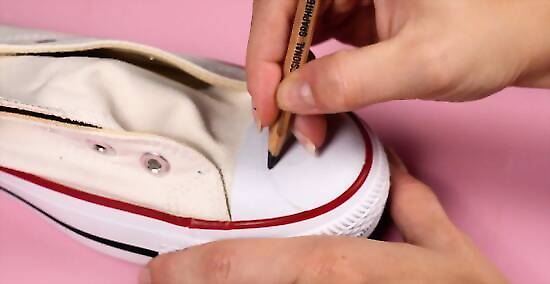
Sketch your design on the shoe using a pencil. If your shoes are white, try to sketch lightly so that the pencil doesn't show through. If your shoes are dark, use a white colored pencil instead.
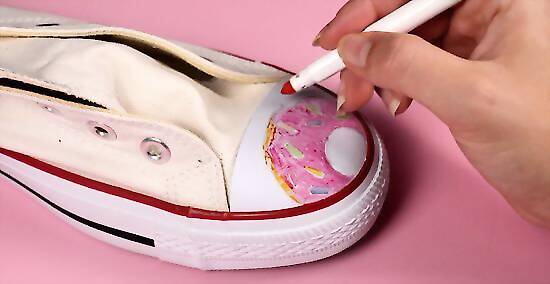
Color in your design, starting with the lightest colors first and finishing with the darkest. Depending on the type of marker you are using, you may need to wait for the ink to dry before moving onto the next color. Don't start with the darker colors. If you do, the ink will smudge and bleed into the lighter colors and make them muddy. If you are using fabric markers meant for colored fabrics, shake it first, then tap the tip on a flat surface. This will help get the ink into the felt tip. The ink will gush out, so don't do the tapping part on your Converse.
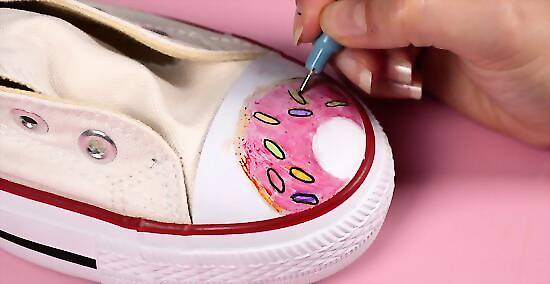
Wait until the ink dries before adding the outlines, if desired. The outlines are not necessary, but they can help make your work stand out some more. Try to use thicker lines on the main/larger shapes, and thinner lines on the smaller shapes and details.
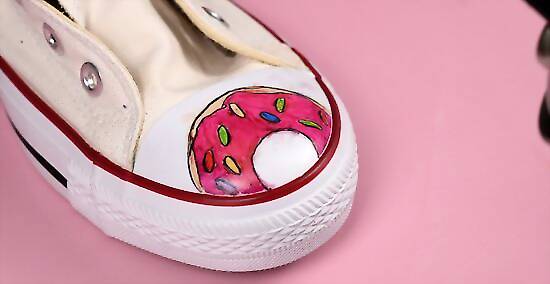
Spray the fabric part of the shoe with a shoe sealant or a waterproofing spray. You can also use a spray-on acrylic sealer. Whatever you choose to use, make sure that it is matte, or your shoes will end up shiny. This will help protect your work and make it last longer. You do not need to spray the rubber parts, if you colored them. Keep in mind that the designs will wear off of the rubber parts on their own the more you wear your shoes.
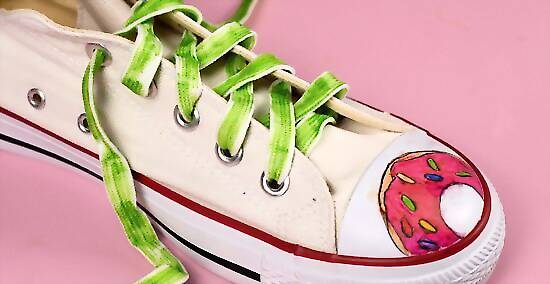
Wait until the sealer dries before putting the laces back in and wearing your shoes. Keep in mind that even with the sealer, your work will still be delicate. Wear your shoes with care and try to avoid getting them wet or muddy.
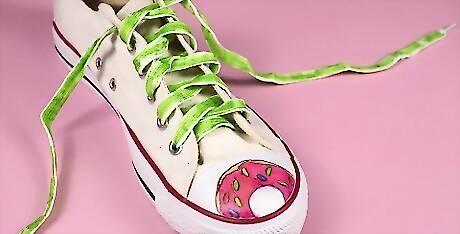
Finished.
Using Paint

Take out the shoe laces and cover the rubber parts with masking tape. This method will only work on the fabric parts of your shoe. Fabric paint and acrylic paint will not stick to rubber for very long. If you'd like to color the rubber parts, you will need to use permanent markers. If you are only painting the sides of the shoe, you do not need to remove the shoe laces.
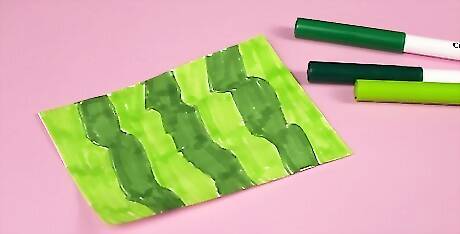
Come up with a design, and practice it on a sheet of paper or scrap of fabric. Once you start painting your shoe, it will be difficult to erase any mistakes. Sketch out your design on a sheet of paper or scrap of fabric, then color it in using acrylic or fabric paint and some thin paintbrushes. Cotton, linen, or canvas fabric will give you the best feel for what it is like to work on Converse. Paper will do in a pinch, however. If your paint is too thick, thin it out with some water.
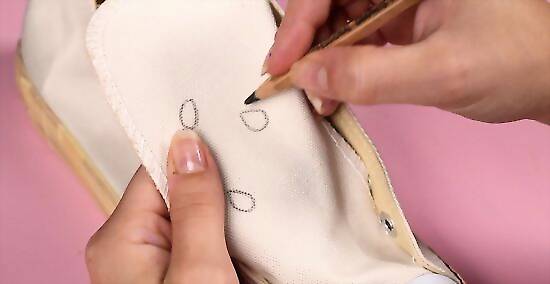
Sketch your design on the shoe using a pencil. Press lightly, so that the pencil doesn't show through once the paint dries. If your shoe is a very dark color, use a white color pencil instead. Simpler designs, such as stripes, stars, and hearts will look the best. If you like cartoons or comics, consider painting your favorite character.
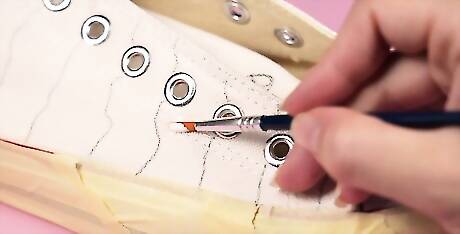
Fill your design in with paint primer if you are using acrylic paint. This will help your colors show up better and make them last longer. Let the paint primer dry before you move on to the next step. If you are using fabric paint, you don't need to use paint primer.
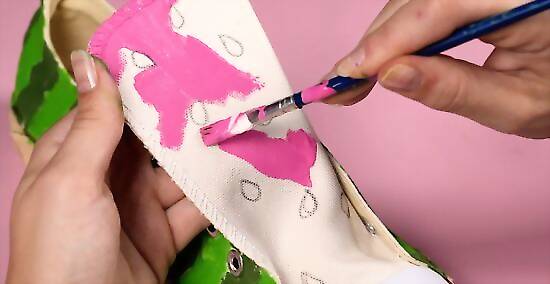
Color in your design starting with the largest shapes first. Paint the edges first, then fill the shape in. If you want to add any details, wait until the paint dries. For example, if you want to paint a ladybug, paint the entire bug red first. Add the spots after the red paint dries. Keep in mind that some colors, such as yellow, will need several coats before they show up well. If you want the outline to be another color (like black) wait until the very end. If you make a mistake, wait for the paint to dry, then paint over it.

Wait for the paint to dry before you do the outlines. You can do the outlines using a thin, pointed paintbrush or a black permanent marker.
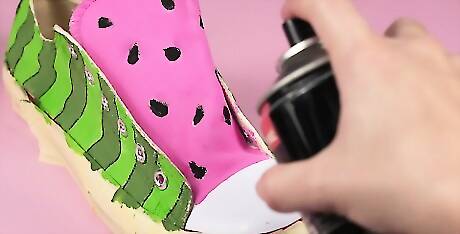
Spray the shoe with a shoe sealant or a waterproofing spray. You can also use an acrylic spray sealer. Whatever you decide to use, make sure that it is matte, or your shoes will be shiny. The sealer will protect your paint work and help it last to longer.
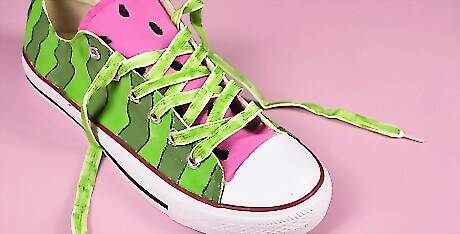
Remove the masking tape once the sealer dries, and put the laces back in. Your shoes are now ready to wear. Keep in mind that even with the sealer, your work will be delicate. Try to avoid wetting your shoes soaked or muddy.
Using Dye
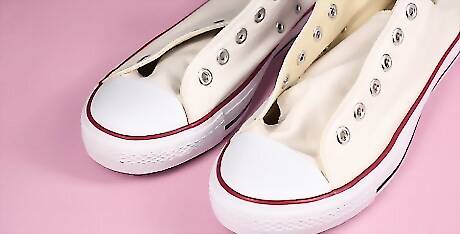
Choose a white or cream-colored shoe. Dye is translucent. It adds color to whatever color is already there. For example, if you tried to dye a pair of blue shoes red or pink, you'll end up with purple. You also cannot dye shoes a lighter color. You can, however, dye any color of shoe black.
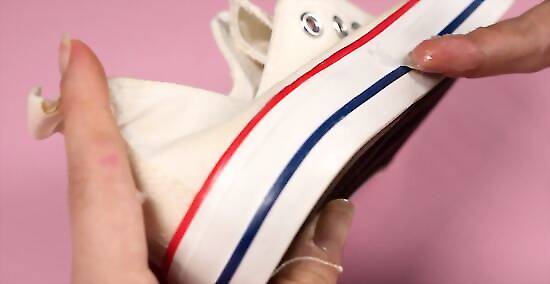
Remove the shoe laces, and cover the rubber soles and toe with petroleum jelly or masking tape. This will protect the rubber from picking up the dye. If you want to dye the laces as well, you will still want to take them out; you will dip them into the dye bath along with the shoes. This will help them dye more evenly.
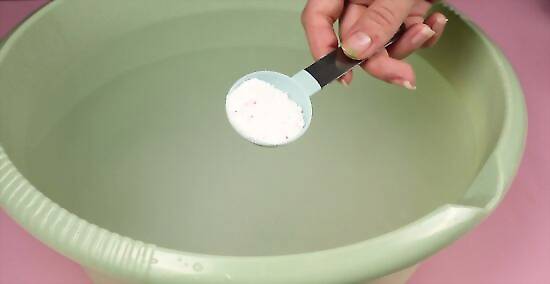
Fill a large bucket with hot water, and stir in 1 cup (225 grams) of salt and 1 tablespoon (15 milliliters) of laundry detergent. Make sure that the bucket is deep enough to fit your shoe. The salt and laundry detergent will help make the dye brighter.

Prepare your dye, then add it to the bucket. Each company may be a little different, so follow the directions on your bottle or packet. In general, liquid dyes do not need any preparation. If you are using powdered dye, you will need to dissolve it in 2 cups (475 milliliters) of hot water first.
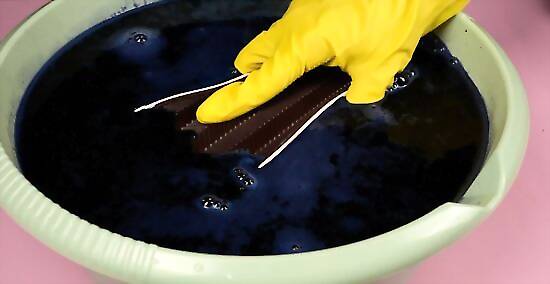
Dunk the shoes into the bucket. If your shoes float to the top, you will need to weigh them down with something heavy. You can use glass jars or bottles, or even sticks. If you don't do this, they will float to the top and your dye job will be uneven. Some people find that soaking the shoes in warm water first helps the dye soak in better and more evenly. Dye can get messy. Consider wearing some plastic gloves to protect your hands from getting stained.
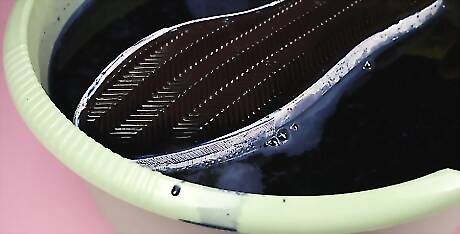
Leave the shoes in the dye bath for 20 minutes. This will give the dye enough time to soak into the fabric.
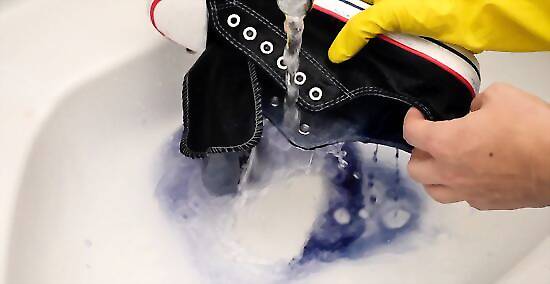
Take the shoes out, and rinse them with water until the water runs clear. Use warm water first to set the dye, and then cold water to get rid of the excess dye. Be sure to get the inside of the shoes as well.
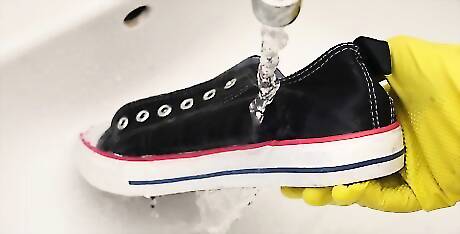
Wait 5 minutes, then rinse the shoes again. This is to get rid of any last traces of dye. Remember to rinse the inside of the shoes as well.
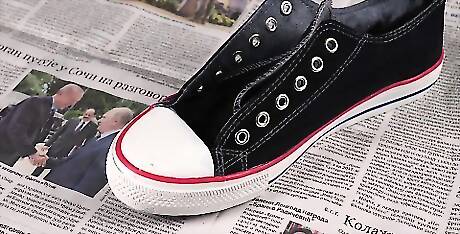
Set the shoes down on some newspaper and let them dry overnight. If you can, set them out in a sunny spot. This will help them dry faster. If you don't have any newspaper, you can use an old towel or even a paper bag instead.
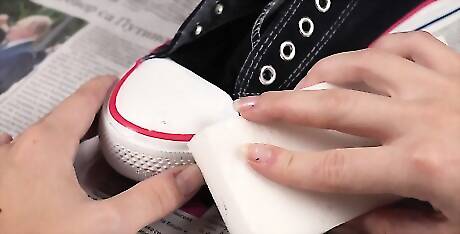
Remove the tape or petroleum jelly. If any dye leaked onto the shoes, you can remove it using rubbing alcohol or a bleach pen. You can also try a magic eraser or a paste made from equal parts of baking soda, water, and vinegar. If you are using a bleach pen, leave the bleach on the rubber parts for 10 minutes, then wipe it off with a damp cloth. Be careful not to get any bleach on the fabric part.

Toss the shoes into the dryer for 10 to 15 minutes. The heat will help set the dye further. It will also help the shoes finish drying, if they are still a little damp.
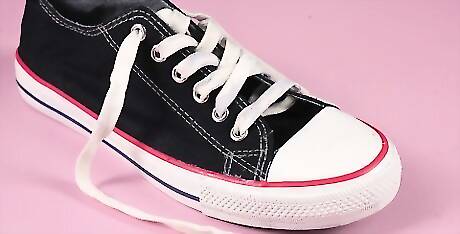
Put the shoe laces back in. Your shoes are now ready to wear.




















Comments
0 comment